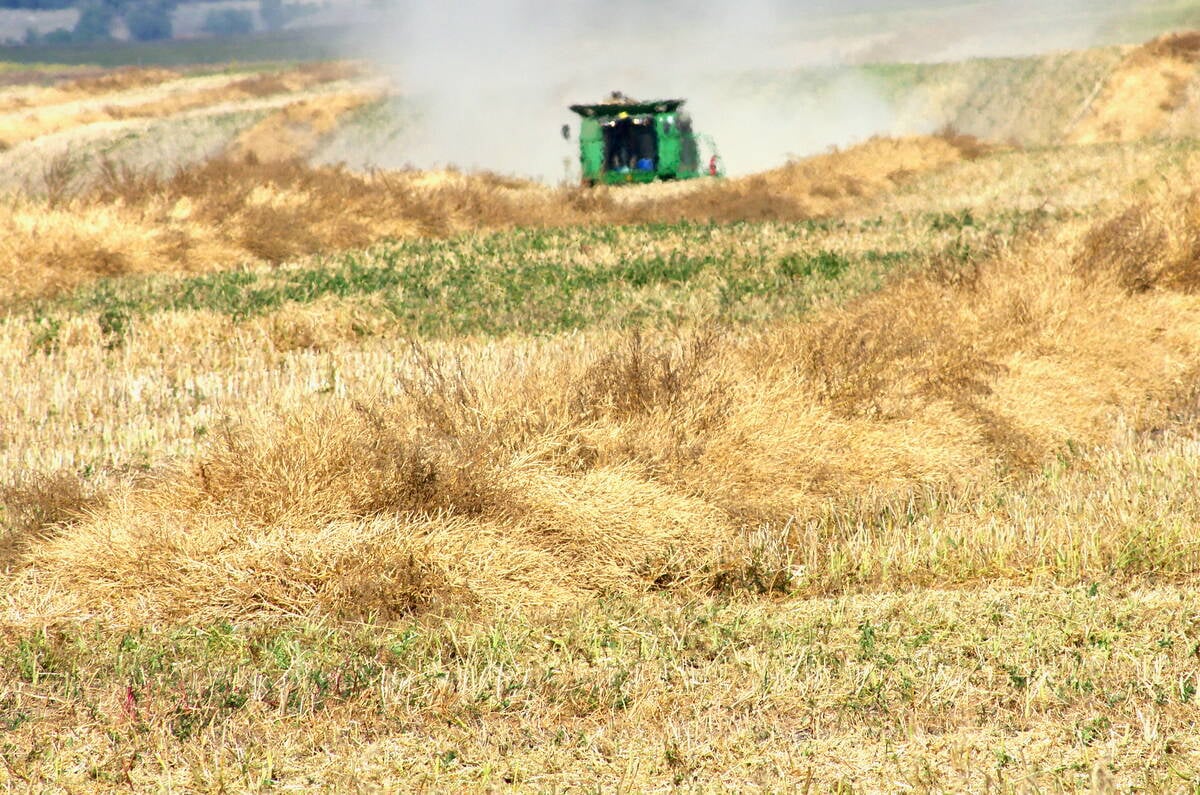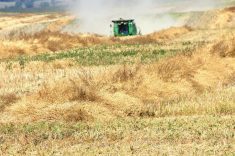NEW SAREPTA, Alta. – With the price of natural gas steadily rising, many farmers and home owners are looking at ways to reduce home and farm shop heating bills.
“A whole lot of people are looking at alternatives,” said Dennis Sherbanuk, of Camrose, Alta., who organized a June 30 alternate heating tour of farms that use alternative systems.
“It was done by popular demand,” said Sherbanuk. People are searching for alternatives or secondary heating systems to offset the high cost of natural gas heat, he said.
Read Also

Manitoba searches for Plan B on canola oil exports
A new report explores Manitoba’s current canola oil trade and possible alternative markets to the U.S.
“If we have options, we have to look at them.”
Mike Dunnigan, owner of Midas Auto Services in Camrose, heats his three-bay garage with the used oil he collects from customers’ cars.
He estimates he saves more than half the heating costs by using old oil. It was an attempt to keep his costs down and do his part for the environment.
“I think it’s important to recycle,” he said.
“We recycle cardboard and tin, why not oil? We’ve always composted at home. That’s just the way I feel.”
The waste oil heater burns about three litres of oil an hour during the cold winter months, when the six large doors are opening and closing all day long.
Gordon Burwash heats his home, farm shop and barn with an outdoor wood furnace he built in the centre of his yard three years ago. During the winter, two large blocks of wood, are good for 12 to 14 hours of heat.
For Burwash, who raises chickens and milks cows on his 40-acre farm, it’s an easy way to save money, even with the $7,000 it cost to build the furnace and install the piping.
“I appreciate coming out here twice a day more than I appreciate turning the gas thermostat up,” Burwash told a farmer who asked if he minded tossing the logs into the fire each winter day.
Ben Ogonoski of New Sarepta, Alta., put a padlock on his gas metre in 1984 and has never regretted his move to coal.
“I haven’t opened a gas bill in 19 years and I haven’t missed it,” said Ogonoski, who has built close to 400 Mini-Flame coal furnaces in his farm shop in between spraying, haying and seeding.
A 150,000 btu furnace with an overhead bin heats the two houses in his yard. One of his older, original furnaces, which he designed and built, heats his farm shop with a couple shovels of coal a day.
In the past 25 years of building furnaces, he’s changed the design to use different paint, better augers and stainless steel pieces to prevent rusting.
“Now they’re designed to last 30 or 40 years,” Ogonoski said during the tour of his farm.
It doesn’t take any work to convince Ed Rostaing about the merits of coal. He never switched from coal in the first place and even designed an early model in-floor heating system for his farm shop. He’s convinced there will be a resurgence of interest in the less expensive fuel.
“It’s just like men’s clothing,” said Rostaing of Bawlf, Alta.
“If you wear it long enough, it’s back in style.”
Robert Peterson of Kingman, Alta., has also always used coal, but a few years ago he wanted to move the dusty old coal furnace out of his basement.
“I wanted to get rid of the dust,” said Peterson, standing beside the outdoor furnace he bought from Ogonoski.
A specially designed grain hopper bin continuously drops coal into the furnace, eliminating the dusty job of shovelling. Every 14 months Peterson fills the modified grain hopper with 15 tonnes of coal.
At $30 a tonne for oiled coal, his heating bill for the house and in-floor heating in the shop averages $35 a month. It cost about $10,000 to install the hopper and furnace in 1996.
“We have to do something different,” said Bernie von Tettenborn of Round Hill , Alta., who likes the look of the coal furnace.
“It doesn’t look like the price of gas is going to go down.”
One of the few remaining coal mines in Canada, Dodds Coal, is just down the road and he’s not interested in cutting wood and packing ashes.
“I’ve been over that road,” van Tettenborn said.
Paula Bowal of Dodds Coal said the number of customers for coal has doubled to 2,500 in the past two years. About 75 percent of them are large users of heat, such as pig operations, greenhouses and poultry barns.
Bowal said coal now costs about $27 a tonne, which would translate into a natural gas price of about $1.50 a gigajoule picked up at the mine for the same heat units. Natural gas prices were $6-$7 a gigajoule in Alberta in June.
Neil Friend of Rosalind, Alta., said he was hoping to see some farms using solar power.
He’s intrigued by the idea of harnessing the prairie sun to power some of the buildings on his farm. He already has solar panels hooked to his camper.
“I’ve been looking for something for five years.”
Adam Campbell agreed. He’s reminded of the high gas and electricity prices each time he opens his monthly bills, and is attracted to the low monthly cost of heat with wood or coal.
However, he’s hesitant to spend $7,000 to $10,000 on a large outdoor wood- or coal-burning stove.
“If natural gas stays up, we’ll have to look at something different.”














